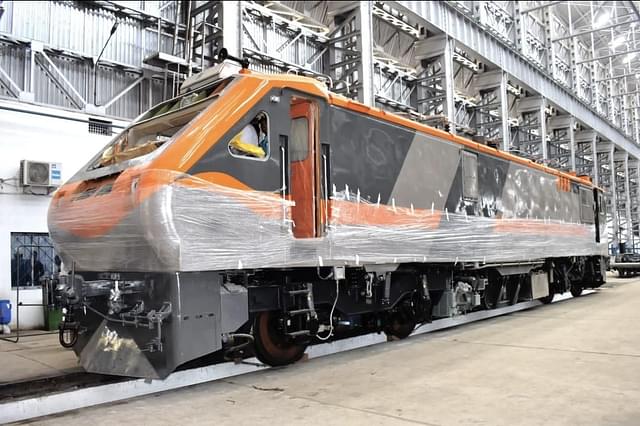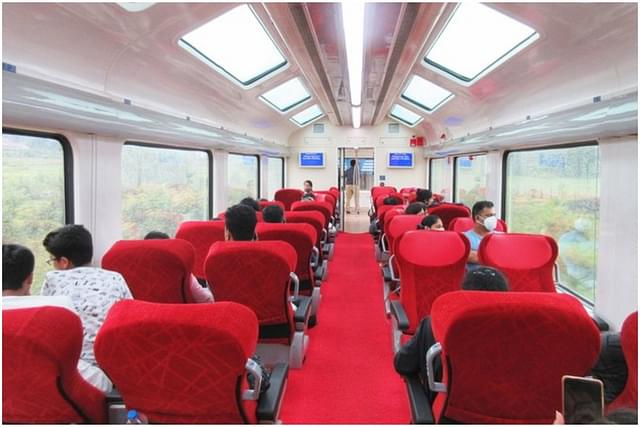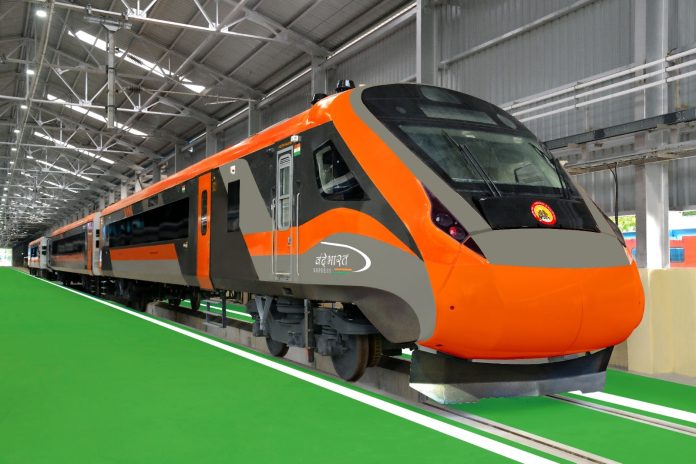For the Indian Railways, among others, introduction of Amrit Bharat push-pull trains, proliferation of Vande Bharat services, redevelopment of stations and the Balasore train tragedy are major moments that mark the year 2023.
Swiftly progressing on its transformational journey, the Railways during 2023 witnessed several records in terms of freight loading, revenue collection, capital expenditure allocation, laying of tracks and other infrastructure works.
The year, however, also witnessed the worst train accident in Balasore, involving three trains claiming nearly 300 lives.
This year also saw the proliferation of Vande Bharat trains and also introduction of Amrit Bharat trains, heralding a new standard of rail services in the country.
Besides, redevelopment of all major stations under Amrit Bharat scheme across the country was witnessed.
The Railways’ gross budgetary support saw a quantum jump to Rs 2.4 lakh crore for the year 2023-24, a record increase in Capex for rail infrastructure.
The Railways has continued to usher in an era of modernisation with modern stations, modern trains and modern technology.
During FY 2022-23, the Railways achieved freight loading of 1,512 million tons (MT), an incremental loading of 94 MT over the previous best of 1,418 MT achieved in FY 2021-22.
During FY 22-23, the Railways earned Rs 160,158.48 crore from freight. The performance excelled in passenger front as well, with number of passenger patronising trains increased to more than 80 per cent to reach 623 crore in FY 2022-23, as compared to 344 crore in FY 2021-22.
In FY 2023-24, on cumulative basis from April-November 2023, freight loading of 1,015.67 MT was achieved by Indian Railways against last year’s loading of 978.72 MT, an improvement of approximate 36.945 MT over last year’s loading for the same period.
The Railways earned Rs 110,007.5 crore against Rs 105,905.1 crore over the last year, which is an improvement of approximately Rs 4,102.445 crore as compared to the same period of the last year.
Total broad gauge network of 60,814 km have been electrified upto November 2023. Fourteen states and union territories have 100 per cent electrified rail tracks including Chandigarh, Chhattisgarh, Delhi, Haryana, Himachal Pradesh, Jammu and Kashmir, Jharkhand, Madhya Pradesh, Meghalaya, Odisha, Puducherry, Telangana, Uttar Pradesh and Uttarakhand.
In the year 2022-23, per day 14 km track was laid and this year’s target is to achieve 16 km per day track laying. The year 2023 also witnessed operation of 41 indigenously designed, semi-high speed Vande Bharat Express trains serving people across the country.
As the year comes to an end, Darbhanga-Ayodhya-Anand Vihar Terminal Amrit Bharat Express and Malda Town-Sir M. Visvesvaraya Terminus (Bengaluru) Amrit Bharat Express trains were launched on 30 December.

The Amrit Bharat train is an LHB push-pull train. This train has locos at both ends for better acceleration. It provides improved facilities for rail passengers like beautiful and attractive designed seats, better luggage rack, mobile charging point with suitable mobile holder, LED lights, CCTV, public information system, among others.
1,309 Amrit Bharat stations have been identified across the nation, with the aim to significantly modernise passenger amenities and improve accessibility and inclusivity of railway stations.
Prime Minister Narendra Modi laid foundation stone for 508 Amrit Bharat Stations on 6 August 2023. These stations are set to emerge as city centres of respective regions.
Work on Chenab Bridge is nearing completion. The first trial run on a track-mounted vehicle on the Chenab bridge in Jammu Kashmir’s Reasi district — the world’s highest railway bridge — was conducted in March 2023.
For the first time in India, a trial run of Kolkata Metro rake was conducted under Hooghly river. The tunnel work was completed between Howrah Maidan-Esplanade in Kolkata.
While work on Pamban Bridge is nearing completion, the Rishikesh-Karnaprayag Char Dham project has also gathered steam.
Indian Railways has set a target of becoming Net Zero Carbon Emitter by 2030. The Railways has taken a number of initiatives to reduce its carbon emissions which include use of energy efficient technologies like completely switching over to production of three phase electric locomotives with regenerative features, use of head-on-generation technology, use of LED lights in buildings and coaches, star-rated appliances and afforestation.
As of October 2023, about 211 MW of solar plants (both on rooftops and on land) and about 103 MW of wind power plants have been commissioned. Further, about 2,150 MW of renewable capacity has also been tied up.
Aiming at promoting ‘Vocal for Local’ vision, providing a market for local/indigenous products and creating additional income opportunities for the marginalised sections of society, the ‘one station, one product’ outlets scheme was launched and currently 1,250 outlets are functional across 1,129 stations.
Before 2014, the number of stations equipped with CCTV surveillance facilities was 123, whereas in the last nine years (2014-23), CCTVs were installed across 743 railway stations.
The year 2023 also saw improved North-East connectivity, with all rail projects progressing swiftly in North eastern states as well. All northeastern states have been connected with rail, except for Sikkim, where the work is currently in progress.
Indian Railways has launched theme-based tourist circuit trains with an objective to showcase India’s rich cultural heritage and magnificent historical places.
Till now, 156 trips of Bharat Gaurav trains on 26 tourist circuits, covering 90 tourist places have been operated. A total of 72,583 passengers have availed this service and currently this service is running on 26 circuits.
As a measure of passenger convenience and to showcase natural and scenic beauty, aesthetically-designed vistadome Linke Hofmann Busch (LHB) coaches on tourist routes have been introduced on Indian Railways.

Vistadome coaches provide panoramic views, through wider body side windows as well as through transparent sections in the roof, thus enabling the passengers to enjoy the scenic beauty along the tracks and attract tourists.
These coaches are running in Kalka- Shimla, Guwahati-Badarpur, Guwahati-Naharlagun, Visakhapatnam-Araku, New Jalpaiguri and Alipurduar.


